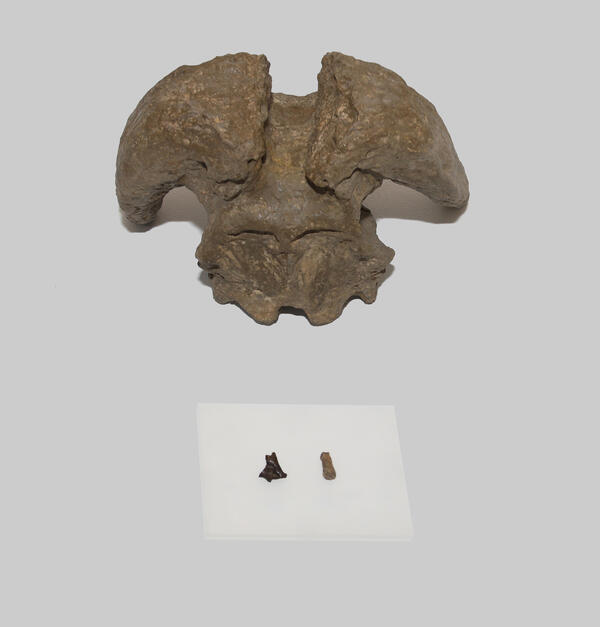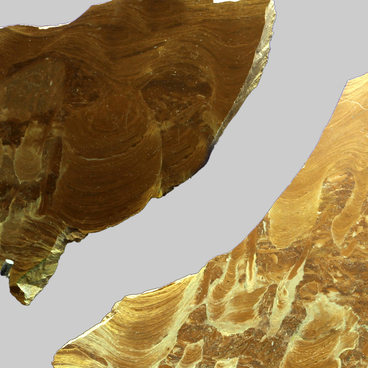Trogontherium or ancient beavers appeared on the territory of Eurasia almost 16 million years ago and became extinct 126 thousand years ago. They were first discussed in the 19th century: then the Russian scientist of German origin Johann Gotthelf Fischer von Waldheim studied the skull of this animal found in the Azov Sea region and gave a description of the open genus of the species. Today, scientists combine three species of ancient beavers into the genus Trogontherium.
The size of these rodents was not much different from modern European species. On average, large individuals could weigh about 30–32 kg. But they were more elongated, about 130 cm in length, and not as stocky as we are used to them today.
The limbs of ancient beavers were also longer, and the tail remained round, rather than flat, as in their modern brethren. Paleontologists believe that the trogontheria did not build dams and were generally not too attached to water. They dug holes for themselves, and in search of food they went from water bodies for long distances and looked more like nutria than beavers.
Small trogontheria gave the name to the largest mammal on land - the Mammuthus Togontherii or steppe elephant. These animals met at the same time and became extinct. Their contemporary - the musk-ox - was more fortunate.
Musk-oxen or musk buffalo, appeared about 3.5 million years ago. Their habitat was Eurasia and then North America. The relationship of musk-oxen with other ungulates is controversial. Previously, it was believed that their closest direct relatives are bulls. Now scientists believe that musk-oxen are closer to goats. In the process of evolution, these animals have practically not changed. Their weight, depending on gender and habitat conditions, can vary from 260 to 650 kg. The largest of them live in western Greenland, and the smallest in northern Greenland. Also, representatives of the species can be found in the Far North of Siberia. In Western Siberia, they became extinct 3-4 thousand years ago.
It was previously thought that the decline in the musk-ox population was associated with humans. People ate their meat, their skins were used to make clothes and dwellings, and horns and bones were used for tools, weapons and jewelry. But at the same time, people were not the reason for the decline in the population of musk-oxen - The animals began to disappear much earlier.
The size of these rodents was not much different from modern European species. On average, large individuals could weigh about 30–32 kg. But they were more elongated, about 130 cm in length, and not as stocky as we are used to them today.
The limbs of ancient beavers were also longer, and the tail remained round, rather than flat, as in their modern brethren. Paleontologists believe that the trogontheria did not build dams and were generally not too attached to water. They dug holes for themselves, and in search of food they went from water bodies for long distances and looked more like nutria than beavers.
Small trogontheria gave the name to the largest mammal on land - the Mammuthus Togontherii or steppe elephant. These animals met at the same time and became extinct. Their contemporary - the musk-ox - was more fortunate.
Musk-oxen or musk buffalo, appeared about 3.5 million years ago. Their habitat was Eurasia and then North America. The relationship of musk-oxen with other ungulates is controversial. Previously, it was believed that their closest direct relatives are bulls. Now scientists believe that musk-oxen are closer to goats. In the process of evolution, these animals have practically not changed. Their weight, depending on gender and habitat conditions, can vary from 260 to 650 kg. The largest of them live in western Greenland, and the smallest in northern Greenland. Also, representatives of the species can be found in the Far North of Siberia. In Western Siberia, they became extinct 3-4 thousand years ago.
It was previously thought that the decline in the musk-ox population was associated with humans. People ate their meat, their skins were used to make clothes and dwellings, and horns and bones were used for tools, weapons and jewelry. But at the same time, people were not the reason for the decline in the population of musk-oxen - The animals began to disappear much earlier.



